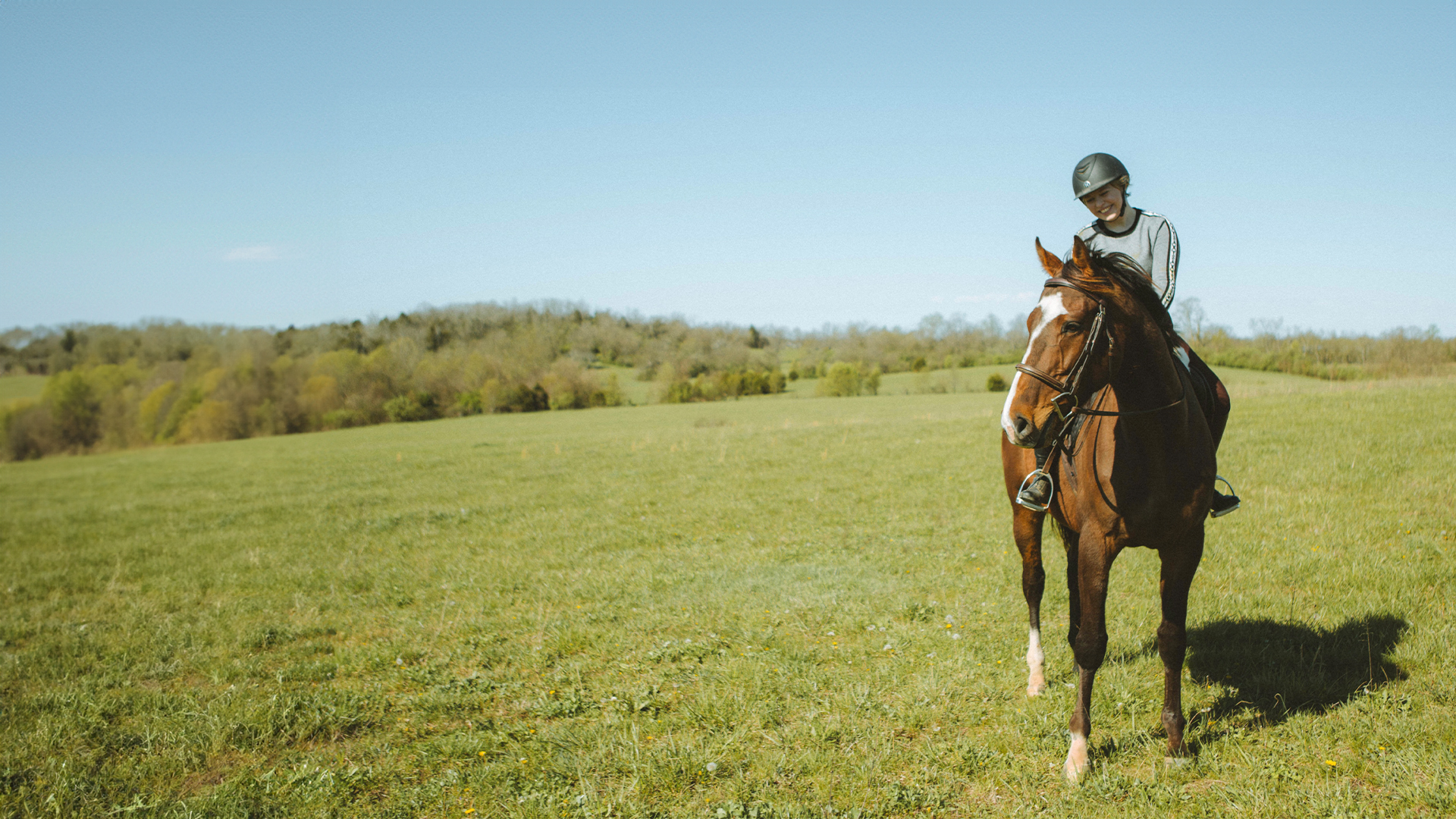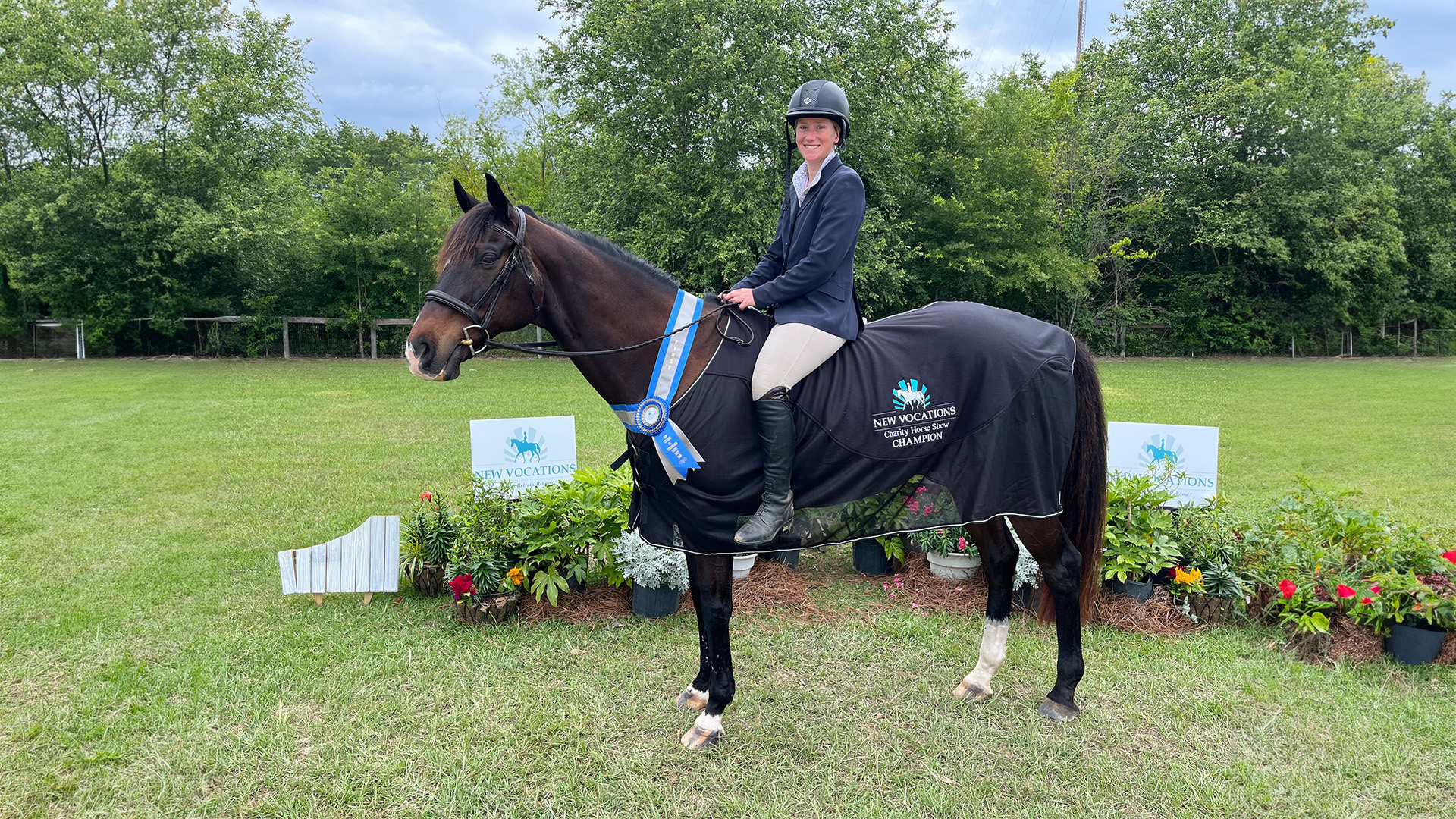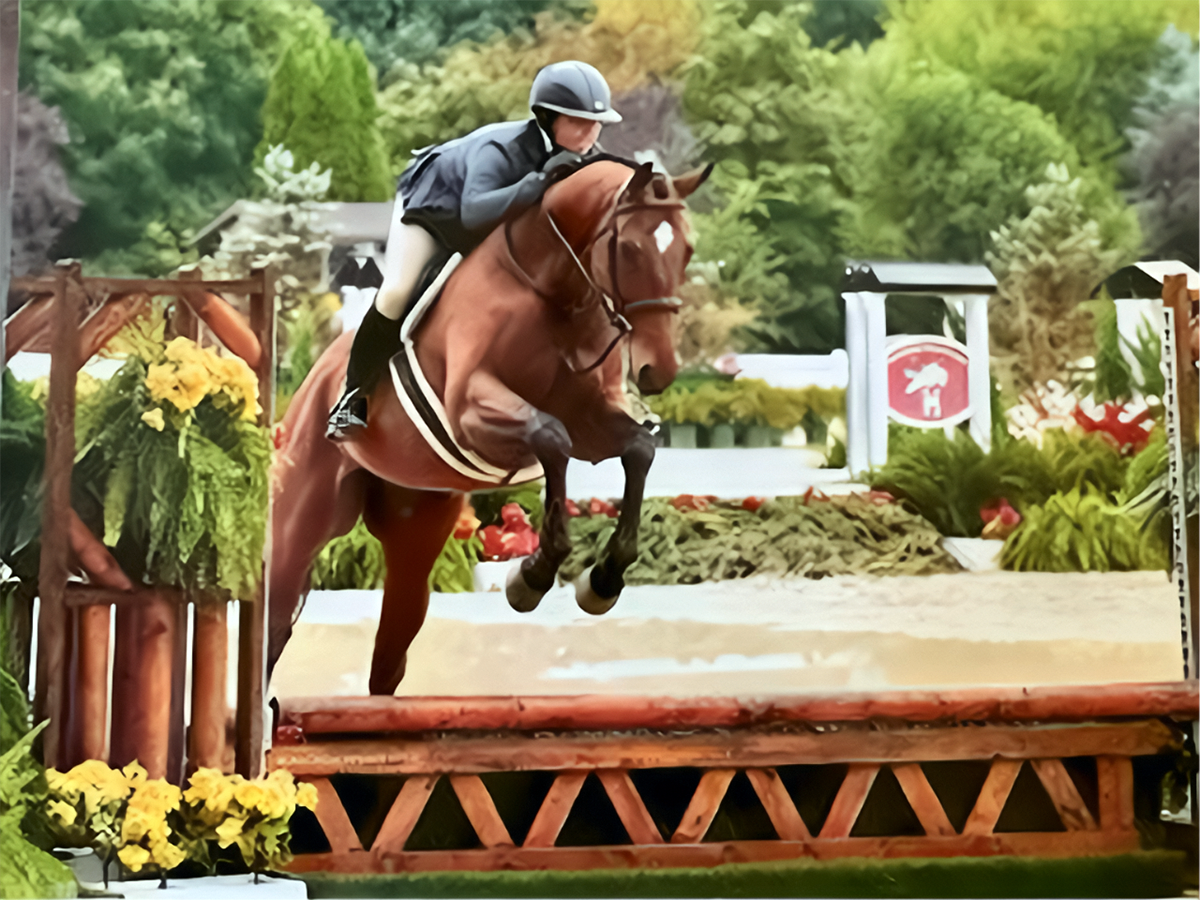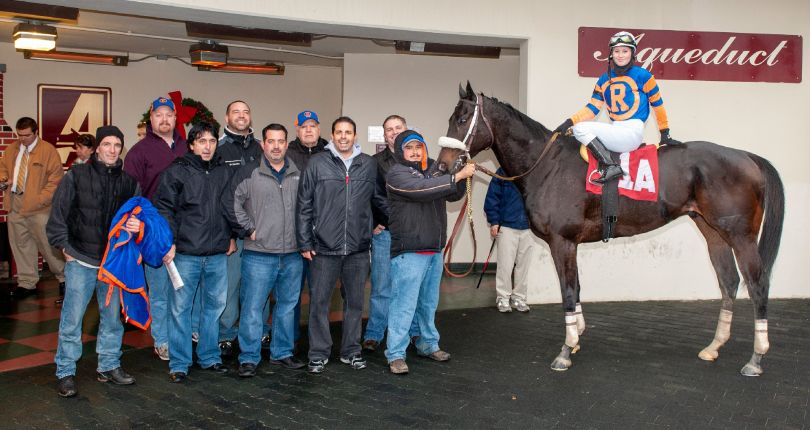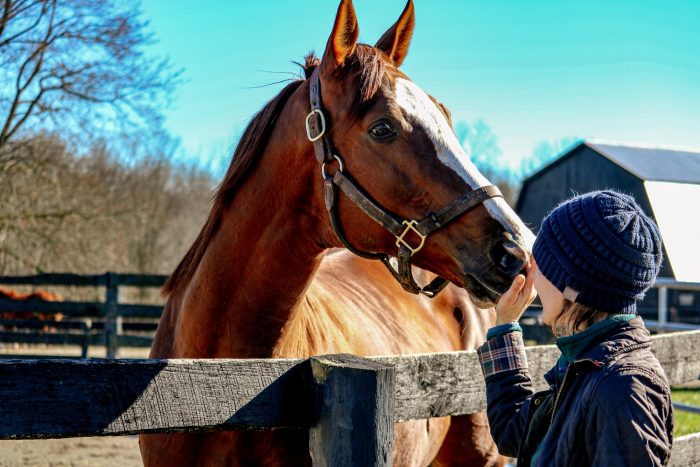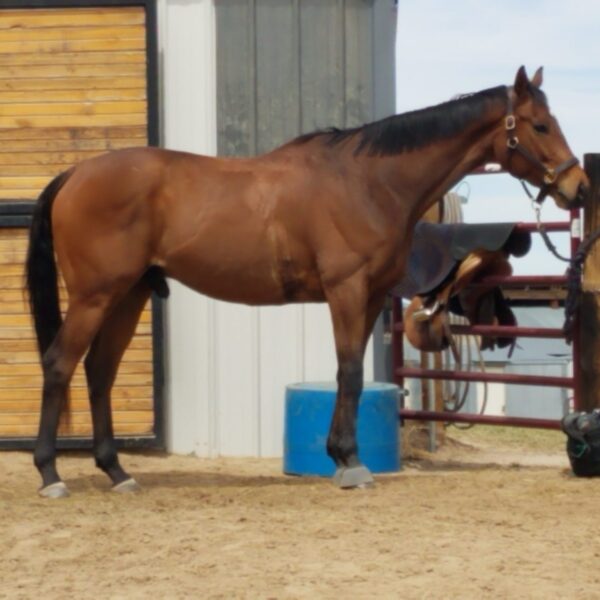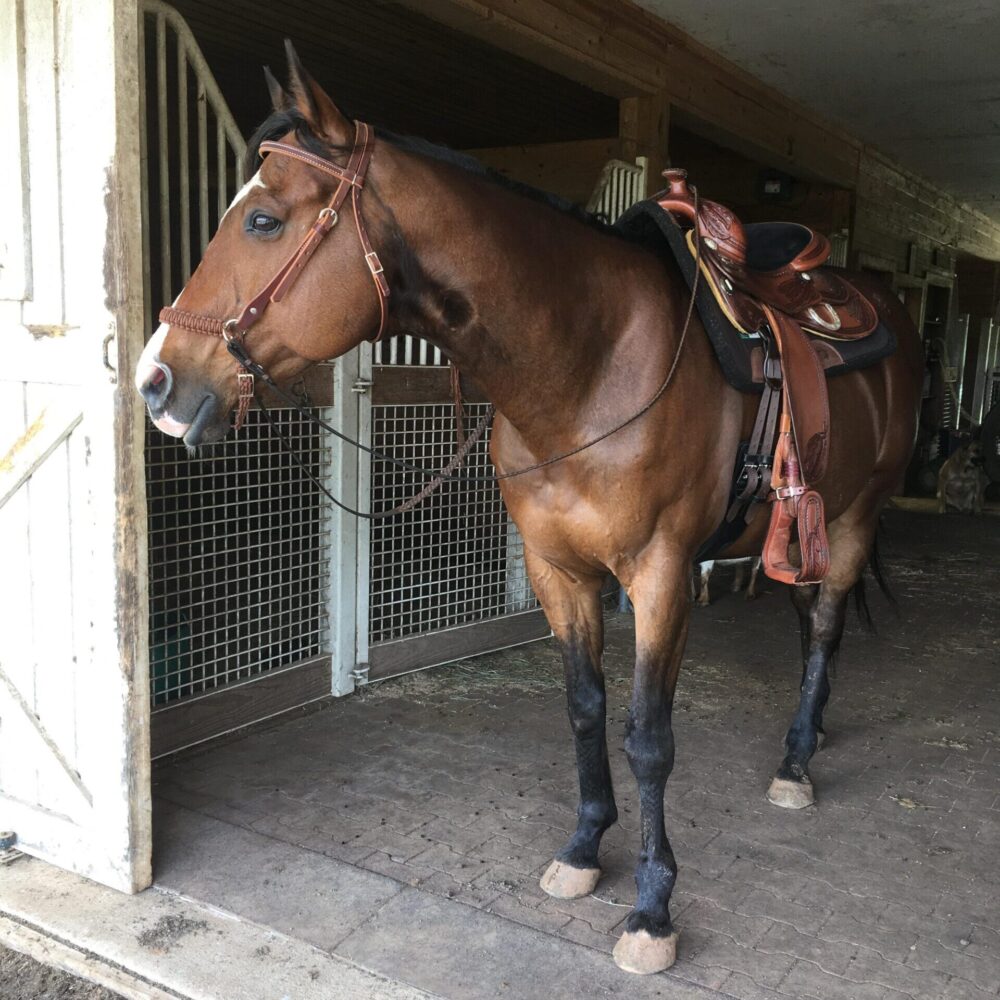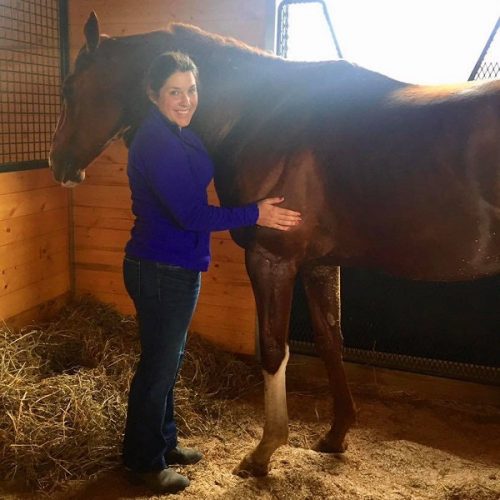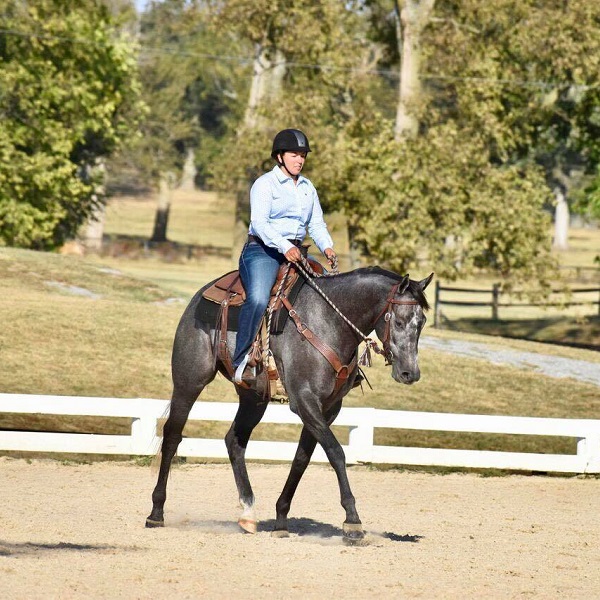New Vocations
All Posts & News Press Releases Success Stories Aftercare Editorials Retraining Tips Supporter Features Equine-Assisted Learning Inspector Spotlights Hamburger Toggle Menu Previous Post A New Chapter for Arrogate Ocean A New Chapter for Arrogate Ocean By: Alexis Arbaugh April 14, 2025 Success Stories Tags:New Vocations, New Vocations Racehorse Adoption Program, Success story, Thoroughbred Aftercare Alliance Born on January 30, 2020, Arrogate Ocean was bred to be a racehorse. However, after it became clear that life on the track wasn’t the right fit for him, he found his way to New Vocations, a Thoroughbred Aftercare Alliance-accredited organization dedicated to retraining and rehoming retired racehorses. Katie Wallach had been casually considering the idea of owning a horse again but hadn’t begun actively searching. That all changed when her best friend, who worked with an equine dentist, happened to be at New Vocations on the day of Arrogate Ocean’s very first ride. She watched him under saddle and immediately knew this was the horse Katie needed. Arrogate Ocean, later known as Sailor, had just arrived at the facility and hadn’t even been listed for adoption yet. But without hesitation, Katie’s friend called and urged her to inquire about him. “Boy, did she have an eye,” Katie said. “I met him a few days later and instantly fell in love.” From the start, Sailor stood out. “His conformation was impeccable, his blaze was the most intricate design — it was mesmerizing,” Katie recalled. “He was an absolute puppy. All he wanted was snuggles. The true definition of an in-your-pocket, derpy gelding.” As Sailor progressed in his retraining, he proved to be a willing and capable partner. “Retraining Sailor was a dream,” Katie shared. “He was so eager to learn and please.” They focused on building a solid foundation on the flat and gradually introduced him to jumping and poles. “The more he grew and matured, the bigger and more beautiful his movement became,” she said. Beyond his athletic potential, Sailor gave Katie a renewed sense of confidence and peace of mind. She had been away from the show world since high school, but with Sailor, she felt ready to return to the Hunter and Equitation classes she once loved. Sailor wasn’t just a talented athlete—he was also a sweetheart with a few quirky favorites. “Sailor’s favorite things were giving pony rides, free jumping, kids, and dogs licking his nose!” Katie said. His playful and affectionate personality made him a barn favorite, and it was clear that Katie had found her perfect match. From off-the-track prospect to beloved partner, Sailor’s journey is one of luck, love, and perfect timing. And for his adopter, it’s proof that sometimes, the right horse finds you exactly when you need them most. Share This Article Do you have a success story that you would like to share? Submit your experience with an accredited organization here: Success Story Submission
Read More >All Posts & News Press Releases Success Stories Aftercare Editorials Retraining Tips Supporter Features Equine-Assisted Learning Inspector Spotlights Hamburger Toggle Menu Previous Post The Horse Who Stole Her Heart: Diamond Bachelor’s Journey Home The Horse Who Stole Her Heart: Diamond Bachelor’s Journey Home By: Alexis Arbaugh April 14, 2025 Success Stories Tags:Breeders’ Cup, dressage, Eventing, New Vocations, New Vocations Racehorse Adoption Program, Success story, T.I.P. Awards, T.I.P. Championships, Thoroughbred Aftercare Alliance, TIP, TIP Championship Horse Show Allison Andrews wasn’t actively searching for a second horse, but she often found herself browsing the New Vocations Racehorse Adoption Program website, just in case something special caught her eye. During one of those casual scrolls, she came across Diamond Bachelor. A seasoned war horse with a unique facial marking, he stood out from the rest. Diamond Bachelor, “Maverick”, raced a total of 62 times, in his career and earned close to $445,000. He even ran in the 2013 Breeders’ Cup Juvenile. Allison watched the videos of Maverick and loved his movement and presence. Allison remembered, “I read his description and it was clear that he had a very strong personality that may not be for everyone.” However, Allison felt an undeniable connection and decided to call New Vocations’ trainer, Erin McDonald, to learn more. Erin explained that Maverick needed firm boundaries and a strong relationship on the ground, but under saddle, he was a gentleman. “Something in my gut told me that he was just going to be a super cool horse and just the right challenge for me,” Allison recalled. She adopted him that very day. When Maverick arrived at her farm a few days later, it was clear that his personality matched his profile. “I never went to see him in person before adopting him, but I was familiar with how New Vocations listed their horses,” Allison said. “I had adopted another horse from them the year prior who was sweet and easygoing. Maverick was probably the complete opposite. But I’ve always had a connection with the ‘hard’ horses.” The first three months were all about building trust. Allison focused on groundwork and relationship-building, often riding only occasionally. “There were some challenging days where I questioned if maybe we weren’t the best match, but then he would show the slightest bit of progress — standing quietly on the cross ties, not kicking out at the brush, and turning in immediately when asked on the line. And I just knew I had to stick with him,” said Allison. By the three-and-a-half-month mark, something shifted. Maverick began seeking out Allison’s attention, following her around the farm, watching her work with other horses, and leaning in for the occasional scratch. “For all the fight he put up, he really is just a soft marshmallow on the inside,” Allison shared. “And if I’m being honest, he reminds me a bit of myself.” As their partnership deepened, so did Maverick’s under-saddle work. “Once we got things sorted out on the ground, everything under saddle just clicked,” Allison said. “He’s eager to please, has great movement, and took to the dressage work beautifully.” Though cautious by nature, Maverick grew more confident with jumping and has since become a force in cross-country. Together, the pair successfully competed in Beginner Novice Eventing, First Level Dressage, Western Dressage, and trail riding—showcasing their versatility and trust in one another. At the 2024 Thoroughbred Incentive Program (T.I.P.) Championships in Aiken, Maverick and Allison had a standout performance. They won the Beginner Novice Combined Test out of 18 entries, placed third in both First Level and Western Dressage, and claimed the Thoroughbred Charities of America / Thoroughbred Aftercare Alliance Geldings Halter Class. They also earned the Thoroughbred Aftercare Alliance High-Score Award across all Dressage divisions. “It’s hard to believe everything we’ve accomplished together, especially considering where we started,” Allison said. “He’s become the best partner I could ask for. I truly believe he would do anything for me.” Maverick continues to delight both in and out of the ring. “He absolutely loves to play in the hose—he’ll interrupt another horse’s bath just to splash around,” Allison laughed. “And he always knows where the show photographers are. He strikes a pose every time.” Looking ahead, Allison and Maverick aim to continue competing in Dressage and Eventing with hopes of moving up the levels. “He’s truly stolen my heart, and I can’t wait to see where our journey takes us next.” She also offered heartfelt gratitude to those who made Maverick’s second career possible. “Special thank you to Andie Biancone and Amy Dunne for getting him to New Vocations and ensuring he had a great start in retirement. It’s been so rewarding to connect with others who’ve loved this incredible horse along the way.” Share This Article Do you have a success story that you would like to share? Submit your experience with an accredited organization here: Success Story Submission
Read More >All Posts & News Press Releases Success Stories Aftercare Editorials Supporter Features Inspector Spotlights Previous Post Stone Surprise Stone Surprise By: Alexis Arbaugh March 6, 2024 Success Stories Tags:hunter jumper, New Vocations, Success story, Thoroughbred Aftercare, Thoroughbred Aftercare Alliance Anna Stone wasn’t actively looking for a new horse, but upon seeing images of Stone Surprise on New Vocations Racehorse Adoption Program’s social media, she found herself unable to resist. The presence of “Stone” in his name and the coincidence of Anna sharing the same last name piqued her curiosity. Anna had previously adopted other horses from New Vocations, making her an approved adopter, which made the process of acquiring a horse easy and straightforward. Every bit of information Anna gathered about Stone Surprise drew her closer to the decision to bring him home. His pictures were flawless, and she loved his look. He was big and bay, without any white on his legs, and a perfect diamond-shaped star on his forehead. His build and beauty reminded her of Thoroughbred Hunters from the 1970s (Anna’s favorite type of horse). Stone Surprise was stabled at New Vocations’ location in Gansevoort, New York. Anna got ahold of Amanda Vance, the Facility Manager and Thoroughbred Trainer at that farm location. Within an hour of talking with Amanda, Anna had ordered a pre-purchase examination for Stone. Soon after the exam, Stone was put on a trailer to Chicago. Since Anna adopted Stone Surprise in March of 2022, he has been in full training. He spent that winter in Ocala, Florida, where he learned the ins and outs of horse show life. He was ready to make his horse show debut in March of 2023, competing in the USHJA 2’ Hunter division, where he won four of his classes and ended as Reserve Champion. The following week, he was Champion of that same division. Upon returning home to Chicago after a long winter in Florida, Stone Surprise went on to compete in the A and B circuit shows in the Chicago area, winning either Reserve Champion or Champion of his 2’ division. As Anna and Stone continue their competitive journey together, they plan to focus on numerous gymnastic exercises and similar grid work to strengthen his muscles further while continuing his training regimen. Their goal is to progressively prepare him to compete confidently at the 2’6 or 2’9 level, aiming to return to Hunter competitions in April 2024. In the short time that Anna has owned Stone Surprise, they have traveled, shown, and he has demonstrated great potential throughout it all. She is very grateful to have such a lovely horse that wants to please and is so willing to learn new thing. “I’d like to give a huge shoutout to New Vocations for their dedication and training of both Thoroughbreds and Standardbreds, and making sure these beautiful creatures are put into the proper environment after the track,” wrote Anna. Share This Article Do you have a success story that you would like to share? Submit your experience with an accredited organization here: Success Story Submission
Read More >By: Mary Eddy/NYRA When a graded stakes-placed dark bay gelding named Digger crossed the finish line third in the 2011 Mister Diz at Pimlico Race Course, his connections knew it was time for the veteran of 39 starts to turn the page and look to a new life beyond the racetrack. It was then that he was sent to New Vocations – a non-profit that retrains and rehomes retired racehorses – and adopted by Verena Brassfield to spend the rest of his days on a tranquil 600-acre farm in Tennessee. “I’ve always had a thing for thoroughbreds and I couldn’t ask for a better horse,” said Brassfield. “I had a thoroughbred before him who passed away, and at first, I didn’t want another horse. But then someone gave my husband the website for New Vocations, and the first picture I saw was my baby. I said, ‘That’s him.’ A week after I applied, I got a call that I was approved.” Digger, a Maryland-bred son of Yonaguska, made his first outing as a juvenile in 2006 and graduated at fourth asking by an impressive 9 1/2 lengths that December at Laurel Park. As a sophomore, he captured three more stakes at Laurel in the Deputed Testamony by a dominating 11 3/4 lengths, the Northern Dancer and the Jennings Handicap to close out the year. In 2008, Digger moved north to the NYRA circuit, where he scored a pair of victories at Belmont Park and Saratoga Race Course. The following year saw his greatest Empire State successes when he earned four victories at NYRA tracks, led by a determined score in the Gravesend to cap his productive campaign. Ridden by Rosie Napravnik, Digger showed his typical frontrunning tactics and raced with Pashito the Che tracking close in second. Digger put 1 1/2 lengths between him and Pashito the Che at the stretch call and was able to fend off his determined rival by a nose in a final time of 1:11.66 for six furlongs over the inner dirt. Digger earned one more stakes victory to kick off his 2010 campaign with a 3 3/4-length victory in Laurel Park’s Fire Plug, and visited the winner’s circle for the last time in March 2011 before owner Repole Stable and trainer Bruce Brown decided to retire the evergreen veteran at age 7. “I watched the replays of his races and if someone had told me then that one day he would be mine, I would have told them they were crazy,” Brassfield said. “He was a good racehorse, and he could run, and still can. When he takes off in the paddock, he leaves everybody behind.” Digger was sent to one of New Vocations’ Ohio facilities where he was cared for until Brassfield saw his posting and applied for adoption in the spring of 2012. It was not long before she was approved, and Digger found his forever home. While Digger needed a great deal of patience and commitment to learn how to be ridden beyond racing, Brassfield was determined to help the beloved gelding settle down and enjoy his retirement. New Vocations, a 501(c)(3) non-profit organization, was founded by Dot Morgan in 1992 and is one of 81 facilities accredited by the Thoroughbred Aftercare Alliance (TAA), an accrediting body that fundraises and awards funds to its accredited organizations throughout the year. The New York Racing Association, Inc. (NYRA) and its horsemen support the efforts of the TAA with each owner who participates at a NYRA racetrack donating $10 per start to thoroughbred aftercare. Additionally, horsemen donate 1.5 percent of the purchase price of horses claimed on the circuit to the TAA and to the New York Thoroughbred Horsemen’s Association’s (NYTHA) TAKE THE LEAD program, which provides veterinary exams and the funds for transportation and retraining costs for horses at NYRA racetracks. “Digger was donated to our program on February 5, 2012, by Mike Repole and was in our program for four months before he was adopted,” said Anna Ford, the Thoroughbred Program Director for New Vocations. “He was a very classy guy.” Brassfield said Digger has been the best teacher she could ask for. “He’s so happy, but in the beginning, he was crazy,” said Brassfield, with a laugh. “He was headstrong and if the boy doesn’t like you, you’ll know it. He’s honest, and I said, ‘Even if I can’t ever ride him, he has his forever home.’ He gives me everything I need just by being here. He taught me more than any horse could have taught me.” 10 years after stepping off the racetrack and with much patience and gradual improvements, Digger enjoys some light riding and flatwork and has settled in beautifully to his retirement. Brassfield describes Digger as “a puppy,” his gentle nature and intelligence allowing him to teach even the youngest of horse lovers. “I started training him and working with him every day,” said Brassfield. “He’s good with kids – another boarder at the farm says Digger is the only horse she trusts with her 3-year-old daughter. He’s not spooky, he’s willing and there’s nothing I can’t throw at him that’s he’s not willing to accept. He has a sense of humor and likes things a certain way.” Digger, who once ran Beyer Speed Figures exceeding 100, leads a quieter life these days, enjoying his time out of the spotlight and with his devoted owner. Though he is a bit limited in his abilities under tack, Digger enjoys the occasional trail ride and flatwork, along with his time to himself in his large paddock with a herd of friends. “He does trail riding and we did lessons for a little dressage, but other than that, he’s leisure and pleasure. He has 30 or 40 acres to roam with about eight other horses. He loves it and loves being out there,” Brassfield said. “All the mares in the pasture are his according to him. He has made one friend that came two months ago, a quarter horse
Read More >This year the Thoroughbred Aftercare Alliance celebrates 10 years of service since being established by the industry—an anniversary that offers racing an opportunity to make actionable goals for continued support of Thoroughbreds. Here is a look at where TAA has been in those years and where it might be going, with help from racing and aftercare industry veterans: Jeff Bloom, TAA president and managing director of Bloom Racing; Richard Schosberg, director and aftercare chair of the New York Thoroughbred Horsemen’s Association, president of TAKE THE LEAD, and TAA board member; Kristin Werner, senior counsel for The Jockey Club and administrator of the Thoroughbred Incentive Program; Jen Roytz, former executive director of the Retired Racehorse Project; Anna Ford, Thoroughbred program director for TAA-accredited New Vocations Racehorse Adoption Program; Lisa Molloy, program director of TAA-accredited ReRun; Laurie Lane, cofounder and president of TAA-accredited Second Call Thoroughbred Adoption & Placement; and Kim Smith, founder of TAA-accredited Second Stride. Q: Why is there a need for industry oversight of aftercare? Werner: The conversations about aftercare really started for me around 2009 or 2010. There was some retraining, retirement, and adoption going on and organizations like Thoroughbred Retirement Foundation, New Vocations, and Thoroughbred Charities of America were doing good work. But, the overall aftercare picture looked a bit piecemeal with gaps in services and areas of the country. And, it was not supported in any large part by the racing industry. As social media continued its rise in popularity, more and more cases of “rescue organizations” needing to be rescued began to appear. The general public became more aware of the fate of Thoroughbreds once their racing careers were complete. It was apparent that a multi-faceted solution was needed, which included accreditation of organizations providing aftercare, a funding source from industry constituents for those organizations to do their work, and incentive programs for Thoroughbreds in a second career. In the years that followed, this was accomplished through the formation of the Thoroughbred Incentive Program, Thoroughbred Aftercare Alliance, Retired Racehorse Project, and numerous other regional and track-based organizations focused on supporting organizations providing aftercare. Molloy: Prior to the formation of the Thoroughbred Aftercare Alliance, there was a time when there were so many rescues and programs operating without any guidance, provisions, or checks and balances. This created issues for those wanting to donate their horses and those wanting to donate money. Finding a way to responsibly retire a horse and ensure an empathetic and compassionate retirement with viable second career options really was a difficult path to navigate for an owner. The processes that are in place, especially using Thoroughbred Aftercare Alliance-accredited organizations working in partnership with racetrack programs like TAKE THE LEAD, provide transparency and prevent horses from falling through the cracks. Q: In the past decade what have you learned about the versatility of the Thoroughbred? Bloom: Over the last 10 years we have seen numerous examples and heartfelt stories of re-trained, re-homed, and re-purposed off-the-track racehorses. From assisting with therapeutic care for mentally and physically challenged children and adults, to full-blown sporting events such as polo, dressage, and eventing, to backyard trail riding, participating in television and movies and everything in-between, the Thoroughbred racehorse has proven to be incredibly kind, intelligent, versatile, and durable for use following their racing careers. Werner: I am fortunate to see on a daily basis how versatile the Thoroughbred is through my work with the Thoroughbred Incentive Program. We have Thoroughbreds participating in and excelling in hunter/jumpers, eventing, dressage, English and Western pleasure, barrel racing, ranch work, endurance, working equitation, therapeutic riding, equine-assisted therapy, mounted police, polo, polocrosse, competitive trail, recreational riding, and even skijoring. I am sure there are more that I am missing. Lane: It was the best kept secret. For those of us who worked with Thoroughbreds, we knew the versatility and the many incredible talents and tasks our Thoroughbreds could achieve just given the chance. Q: Do you think there has been a new interest in the Thoroughbred as a sport horse? Roytz: A thousand times yes. One of the most meaningful statistics that comes out of the data we collect from our Thoroughbred Makeover competitors each year is the ratio of first-time competitors versus repeat participants. Each year a significant portion of the competitors at the Thoroughbred Makeover are competing at the event, and often taking on the retraining of a Thoroughbred, for the first time. RRP’s mission is a bit different from most other aftercare organizations in that it focuses on expanding the market and increasing demand for Thoroughbreds in equestrian sports rather than doing hands-on re-training and re-homing. I strongly believe it takes both approaches to aftercare to be successful. The Jockey Club’s Thoroughbred Incentive Program and the TAKE2 program, both of which offer Thoroughbred-specific shows, horse show classes, and prizes throughout the country, as well as TIP’s recreational riding prizes and incentives, are other great examples of ways to incentivize equestrians to actively choose Thoroughbreds over other breeds for equestrian sports. Q: What do you think the factors in this have been that have helped a new interest in the use of the Thoroughbred? Roytz: Programs like the Retired Racehorse Project, The Jockey Club Thoroughbred Incentive Program, TAKE2 show series, and others that incentivize equestrians to compete on Thoroughbreds is a major driver in garnering new interest for Thoroughbreds in the equestrian world. I think adjusting our messaging as an industry will continue to help to appeal to equestrians. By positioning Thoroughbreds not as “retired racehorses” (which naturally insinuates a conclusion to their use/usefulness) but as “Thoroughbred sport horses” or “sport horse prospects” will make them more appealing to a non-racing equestrian audience as it focuses on these horses’ potential in new sports, the sports they are being marketed for, and that they will likely spend a more significant portion of their life doing. Q: What have been some of the most important developments of Thoroughbred Aftercare in the last 10 years? Ford: In the last 10 years
Read More >Melissa Barber instantly fell in love with Zesty Zar when she saw the son of Tapizar on the website of TAA-accredited New Vocations.
Read More >The well-bred gelding found his calling off the racetrack in the dressage arena thanks to TAA-accredited New Vocations.
Read More >Shortly after his 12th start, Kulik Lodge retired to TAA-accredited New Vocations with a record of 4-2-0 and earnings just under $181,000. Since the Kentucky-bred’s adoption, the pair has worked hard to build a solid foundation in eventing.
Read More >The unraced son of Temple City has made quite a name for himself by consistently placing in the ribbons in a variety of disciplines.
Read More >





